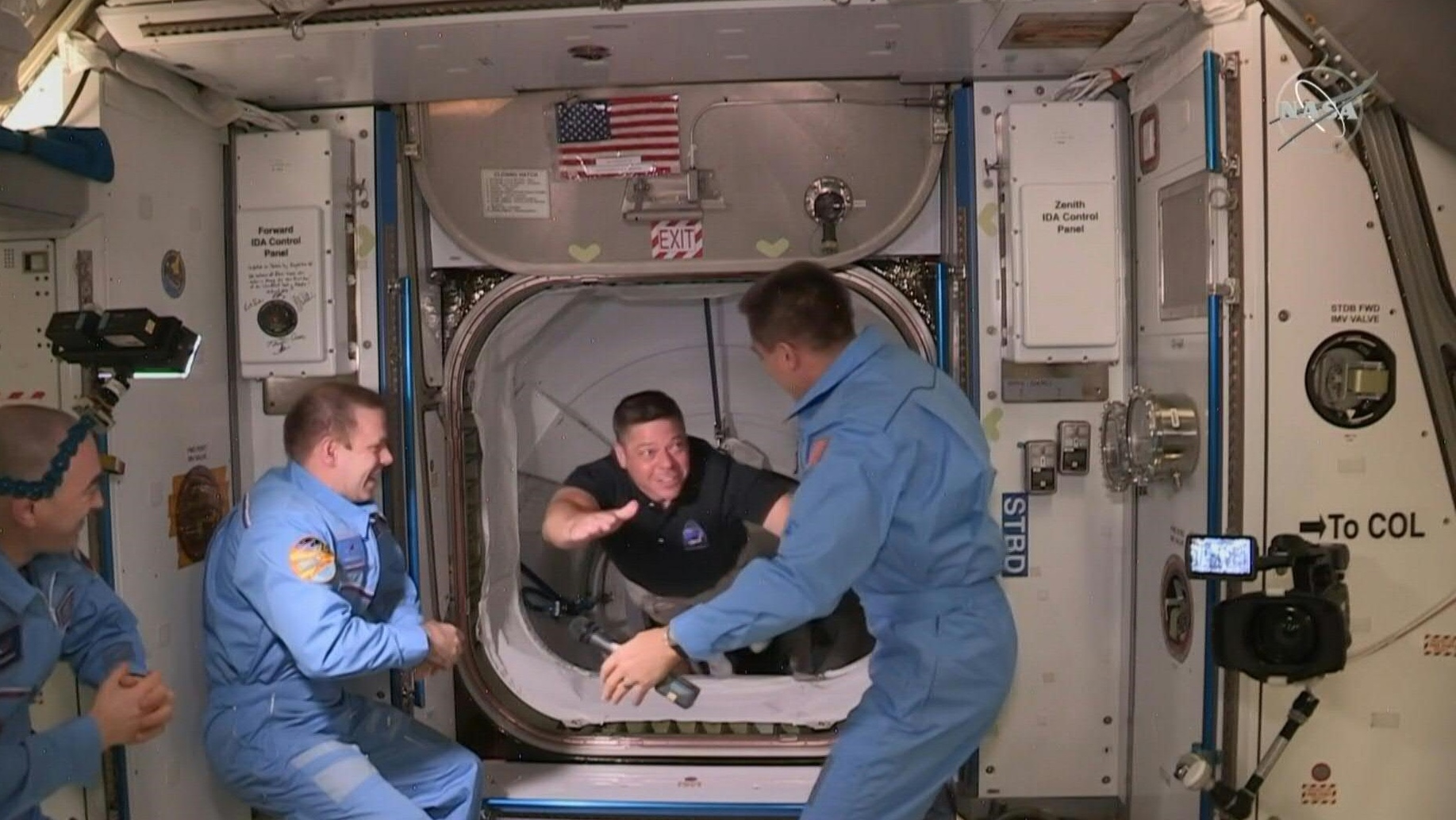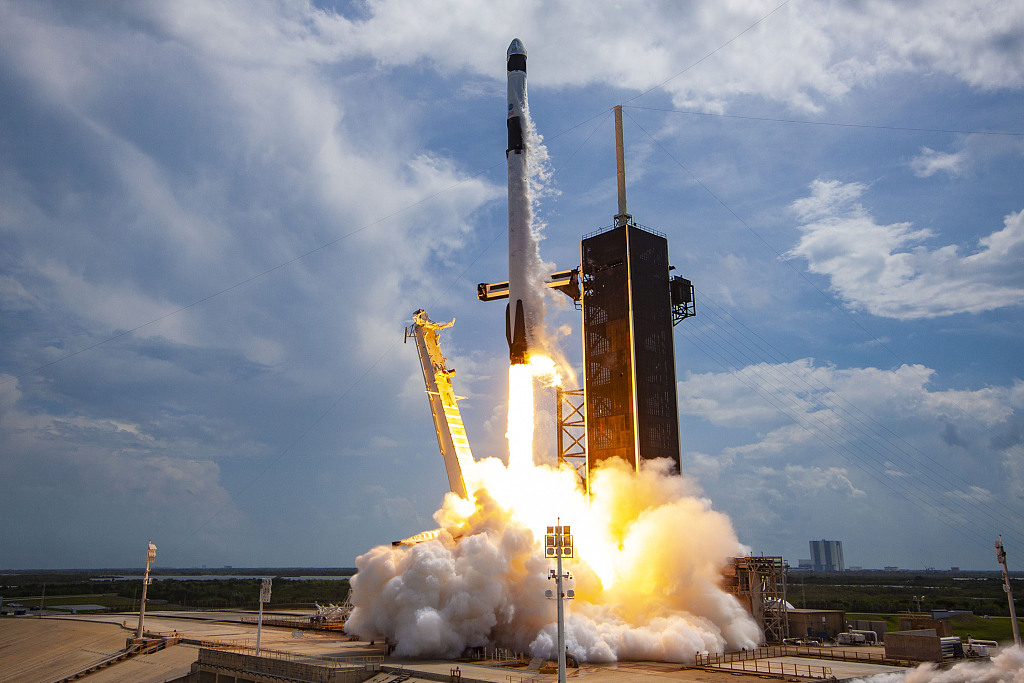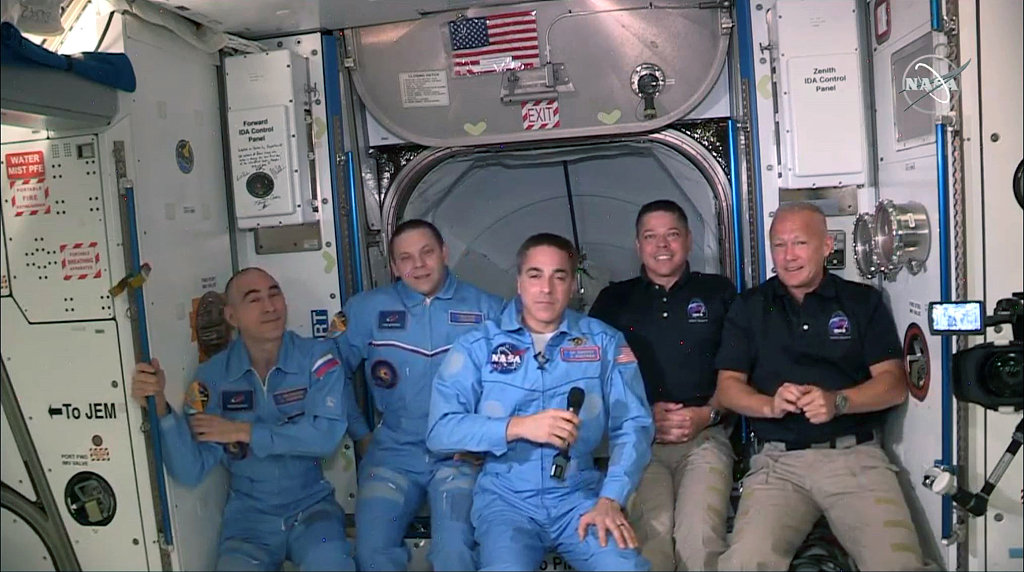01:20

SpaceX's Crew Dragon capsule carrying two American astronauts Bob Behnken and Doug Hurley docked at the International Space Station (ISS) on Sunday, marking the first time that American astronauts have been launched on an American rocket from American soil to the ISS since 2011.
Confirmation of the Dragon's attachment at the ISS came at 14:16 GMT (10:16 EDT), slightly ahead of schedule.
The two astronauts were welcomed by the current crew at the ISS at 1:25 p.m. EDT, after executing a critical spacecraft docking milestone and kicking off the crew's potentially months-long stay in the orbital laboratory.
Applause could be heard from the station's downlink to mission control in Houston, Texas.
"The whole world saw this mission, and we are so, so proud of everything you have done for our country and, in fact, to inspire the world," NASA Administrator Jim Bridenstine said in a call from Mission Control in Houston.
Behnken said he and Hurley were able to get a few hours' sleep during their 19-hour orbital journey, telling the administrator that "the first night is always a little bit of a challenge, but the Dragon is a slick vehicle and we had good airflow so we had an excellent evening."
"It's great to get the United States back in the crewed launch business, and we're just really glad to be on board this magnificent complex," Hurley said.

A SpaceX Falcon 9 rocket carrying the Crew Dragon spacecraft lifts off from launch complex 39A at the Kennedy Space Center in Florida, United States on May 30, 2020. /VCG
A SpaceX Falcon 9 rocket carrying the Crew Dragon spacecraft lifts off from launch complex 39A at the Kennedy Space Center in Florida, United States on May 30, 2020. /VCG
The spacecraft was launched by NASA and SpaceX from NASA's Kennedy Space Center in Florida on Saturday, and the first stage of the Falcon 9 rocket also successfully landed back on the company's drone ship dubbed "Of Course I Still Love You" in the Atlantic afterwards.
More: Watch SpaceX and NASA make history
It represented another milestone for the reusable rockets it pioneered to make spaceflight less costly and more frequent, and also marked the first time that NASA astronauts have launched in a commercially built and operated American crew spacecraft into orbit.
After reaching orbit, Behnken and Hurley announced that they had named their capsule Endeavor.
The two men are scheduled to have a stay of up to four months in the ISS, after which they will come home with a Right Stuff-style splashdown at sea, something the world hasn't witnessed since the 1970s.

NASA astronauts Doug Hurley (R) and Bob Behnken (2R) join NASA astronaut Chris Cassidy (C) and Russian cosmonauts, Anatoly Ivanishin (L) and Ivan Vagner (2L) aboard the International Space Station after successfully docking SpaceX's Dragon capsule May 31, 2020. /VCG
NASA astronauts Doug Hurley (R) and Bob Behnken (2R) join NASA astronaut Chris Cassidy (C) and Russian cosmonauts, Anatoly Ivanishin (L) and Ivan Vagner (2L) aboard the International Space Station after successfully docking SpaceX's Dragon capsule May 31, 2020. /VCG
This is SpaceX's final test flight for NASA's Commercial Crew Program and will provide critical data on the performance of the Falcon 9 rocket, Crew Dragon spacecraft, and ground systems, as well as in-orbit, docking and landing operations.
The Falcon 9 took off from the same launch pad used by NASA's final space shuttle flight, piloted by Hurley, in 2011. Since then, NASA astronauts have had to hitch rides into orbit aboard Russia's Soyuz spacecraft.
NASA last sent astronauts into space on a brand new vehicle 40 years ago at the start of the space shuttle program.
(With input from agencies)